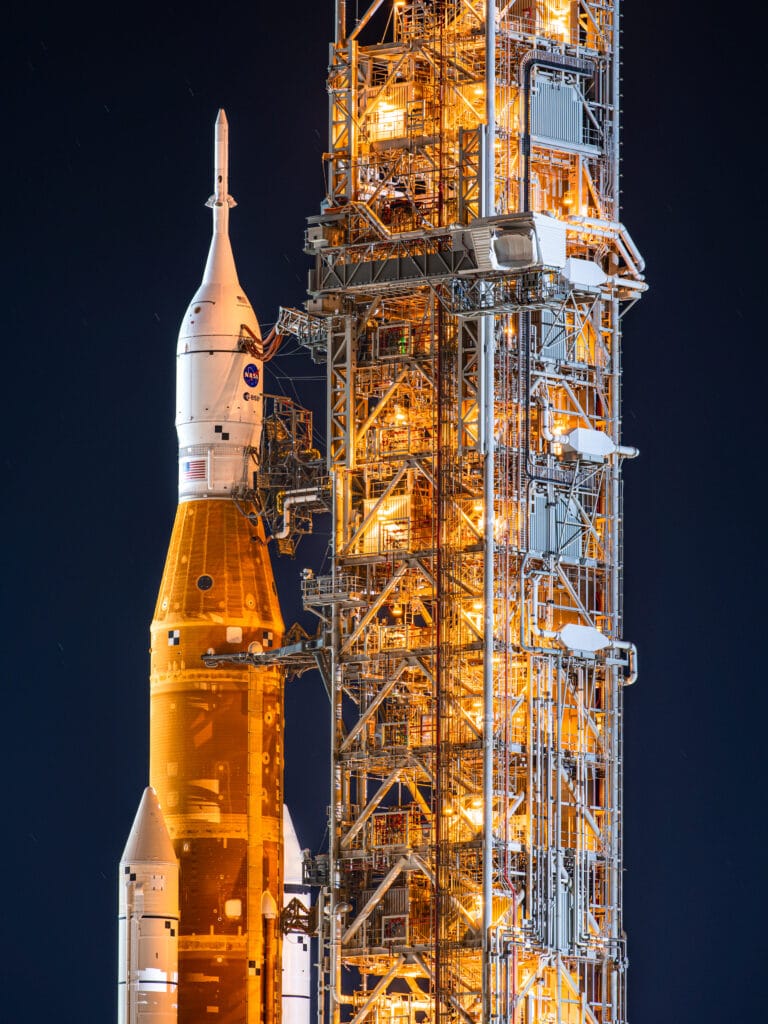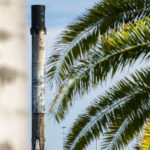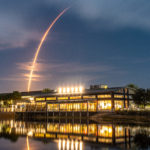
Ever since the termination of NASA’s Apollo program, taking place from 1961 to 1972, humanity has lacked the capability to send people to the moon. However, this will soon be coming to an end with NASA’s Artemis program – the successor to Apollo. The Artemis program aims to establish a permanent human presence on the moon. This would be quite a large leap over Apollo, where expeditions on the lunar surface lasted, at most, a couple of days.
The launch vehicle that plans to facilitate part of Artemis’s goals is the Space Launch System (SLS). This incredible rocket towers 322 feet (98 meters) high – taller than the Statue of Liberty! With the successful launch of Artemis I on November 16, SLS is now the most powerful rocket in history to reach space. From our perspective at the press site, it was as if the sun was rising as SLS ascended from Launch Complex 39B (LC-39B). The entirety of the press site erupted into applause as we collectively struggled to believe this awe-inspiring sight!

The Artemis I mission will last approximately 25 days. The Orion spacecraft and service module will traverse 280,000 miles (~450,000 kilometers) to the moon over the course of several days. On its closest approach, the spacecraft will be only 60 miles (~97 kilometers) from the lunar surface! Orion will complete two flybys around the moon, the second of which will be used to slingshot the spacecraft back to Earth in what is called a gravity assist. Upon reentry into Earth’s atmosphere, Orion will be traveling a whopping 25,000 mph (40,000 kph). After a blistering hot reentry, Orion will splash down in the Pacific, off the coast of San Diego, using three main parachutes to slow its descent to the ocean.
Prior to SLS’s inaugural flight, we documented the final rollout of SLS on the night of November 4th. The included photos of this event were taken by us and provided courtesy of Spaceflight News. The first image is a close-up of SLS and the beautifully illuminated mobile launcher structure. The second and third images show the crawler carrying SLS toward its launch site LC-39B in the background.

Artemis, important as it is, will ultimately be a stepping stone for NASA’s grander ambitions of sending humans to Mars. Developing the technologies required to colonize the moon will aid the space program in reaching this ultimate goal. It would appear an exciting future among the solar system awaits us!
Photos by Emerson & Ethan Walsh, Courtesy of Spaceflight News


